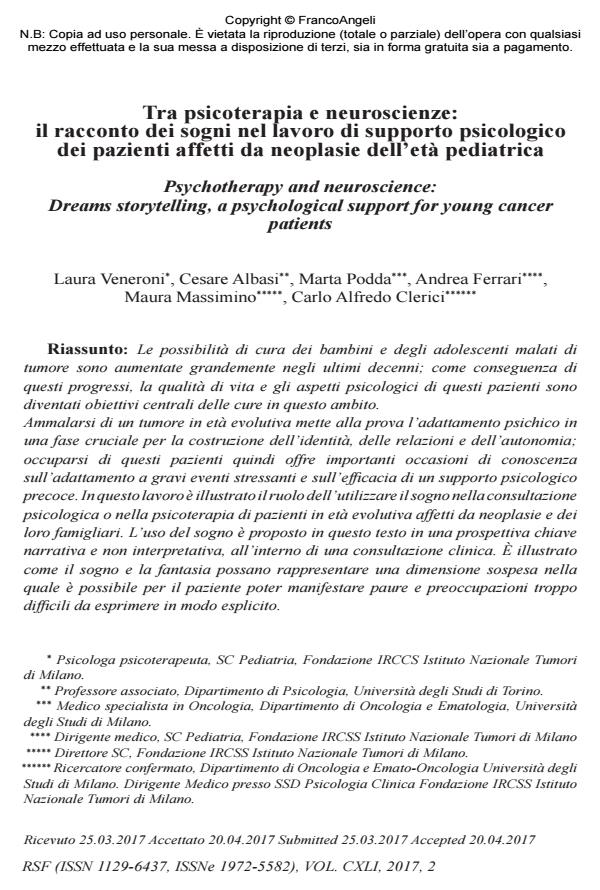Psychotherapy and neuroscience: Dreams storytelling, a psychological support for young cancer patients
Journal title RIVISTA SPERIMENTALE DI FRENIATRIA
Author/s Laura Veneroni, Cesare Albasi, Marta Podda, Andrea Ferrari, Maura Massimino, Carlo Alfredo Clerici
Publishing Year 2017 Issue 2017/2
Language Italian Pages 18 P. 131-148 File size 1772 KB
DOI 10.3280/RSF2017-002008
DOI is like a bar code for intellectual property: to have more infomation
click here
Below, you can see the article first page
If you want to buy this article in PDF format, you can do it, following the instructions to buy download credits

FrancoAngeli is member of Publishers International Linking Association, Inc (PILA), a not-for-profit association which run the CrossRef service enabling links to and from online scholarly content.
Advances in the treatment of neoplastic diseases have been substantial, in the last decades, and have brought to the forefront patients’ psychological experiences and quality of life. Neoplastic diseases, during childhood - a critical stage in identity, autonomy and relational development - threaten a child’s capacity to adapt. Thus, treatment, in this age group, represents a key moment for studying a young person’s capacity to adapt to severe and stressful events and also to observe the effectiveness of early psychological support. The Authors describe the role of dreams in psychological counseling, or psychotherapy, for young cancer patients and their families. Dreams, in this setting, are examined using a narrative approach, not an interpretative perspective. Dreams and fantasies help the patient to bring to light fears and concerns, often difficult to express.
Keywords: Oncology, psychological support, hospital psychology, trauma, cancer, pediatric oncology
Laura Veneroni, Cesare Albasi, Marta Podda, Andrea Ferrari, Maura Massimino, Carlo Alfredo Clerici, Tra psicoterapia e neuroscienze: il racconto dei sogni nel lavoro di supporto psicologico dei pazienti affetti da neoplasie dell’età pediatrica in "RIVISTA SPERIMENTALE DI FRENIATRIA" 2/2017, pp 131-148, DOI: 10.3280/RSF2017-002008